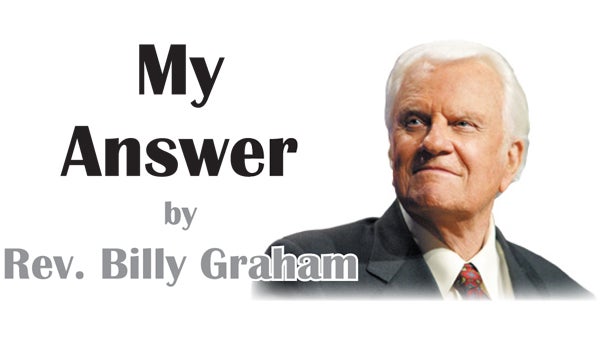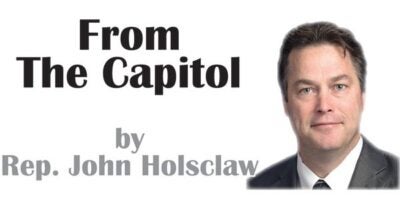A little less conversation…a lot more spending
Published 4:36 pm Friday, August 27, 2021
|
Getting your Trinity Audio player ready...
|
THE BEACON REPORT
In the final days of 2020, Governor Bill Lee called a special legislative session to focus solely on education issues the state faced stemming from the pandemic. The four-day special session concluded on January 21, 2021 with lawmakers passing $160 million in additional education funding, including $43 million for teacher pay raises.
Although millions more were put into the public education system at a time when many schools were still closed, some Democratic lawmakers and the public were calling for even more investment in education.
Despite constant calls for more money, research shows the amount of actual funding spent on public education is rarely known. A 2013 survey of the public’s views and opinions of K-12 education found that 70 percent of Americans either underestimated school spending or could not even venture a guess about the amount of tax dollars spent per student annually.
Unfortunately, the public’s understanding of how much is spent on public education has failed to improve. The results of Ed Choice’s updated 2020 survey revealed that Americans’ understanding of public education spending had fallen even further, with 80 percent of the general public underestimating education spending. Perhaps more surprising is that 82 percent of parents with school-age children severely underestimated school spending.
It is easy to understand why the general public is so unaware of how much public education costs when school districts routinely argue they are underfunded and that they need more money from taxpayers. Yet funding has been increasing every year, with K-12 public school funding being the largest appropriation of state dollars in the budget, receiving nearly one-third of every state tax dollar.
If the claim that our public schools are underfunded is true, then it begs the question: “Where is the money going?” The Beacon Center previously analyzed K-12 education spending in two different reports: 2013’s “Following the Money: A Tennessee Education Spending Primer” and 2018’s “Counting Dollars and Cents: Where Does the Money Go?” Both found the average per-pupil expenditures have been significantly underreported for years. This feature has not changed with the 2020 Statistical Report published by the Tennessee Department of Education (TDOE), showing the Per Pupil Expenditure (PPE) — the average spent per student — was $9,998 for the 2019-2020 school year. This amount is more than double what the general public believes per pupil spending to be — and nearly five times the median response from school parents in the 2020 national survey, where parents assumed the PPE to be just $2,000 a year. However, this figure still does not take into account other educational spending that is not directly related to classroom operations.
The calculation provided by TDOE excludes spending categories like community services, capital outlay, debt service, capital projects, and student body education. While these costs do not count as instruction (salaries, textbooks, materials, etc.) or day-to-day expenditures, they are taxpayer funded and should be included in any calculation to find the true PPE. With these adjustments, minus expenditures for student populations not covered by Average Daily Attendance (such as early childhood education and adult education), the true operating expenditures for the fiscal year ending in 2020 was over $10.8 billion. That equals a true PPE of $11,391 — nearly 14 percent greater than what is publicly reported. In fact, since 2012, official government numbers have on average under reported PPE by over nine percent per year.
Here are some of the takeaways of the report:
— In Tennessee, only 53% of educational funding makes it into the classroom, 7% below the national average.
— Since 2012, after inflation, the average teacher’s salary has actually decreased by 1.5% while the average superintendent’s salary has grown by 8.3%.
— Tennessee taxpayer investment in K-12 education has grown and now sits at nearly $11 billion, yet the percentage of money that makes it into the classroom continues to shrink.
— Since our last report in 2018, administrative spending has increased by a whopping 13.5% while total spending has only increased by 3%.
— Tennessee taxpayers spend $11,391 per student. That number is five times more than surveys show school parents believe is spent.
It’s clear that Tennessee has made public education a priority, with K-12 public schools being the largest line item of state tax dollars in the budget. This investment is even under reported as the state’s reported Per Pupil Expenditure amount does not include all relevant categories of spending. Although student enrollment rates remain nearly flat, millions more dollars are funneled each year to public education. However, the data show a drop in teacher compensation and a decrease in the number of teachers due to ballooning administrative costs. This means that while calls for additional education funding have been answered, the destination of those funds has not met the needs of Tennessee students and teachers.
Despite a growing public education system, relatively fewer and fewer dollars are making it into the classrooms of Tennessee schools. Though the Beacon covered this alarming trend of expanding administration and bureaucracy since 2013, it sadly continues to take precedence over students and instruction. To reverse course and return funding to the classroom, actions must be taken at both the state and, more importantly, local levels. Parents, educators, and stakeholders statewide should demand accountability from local school districts and push for school boards to address the reasons why they have consistently chosen to fund their systems over their students.




